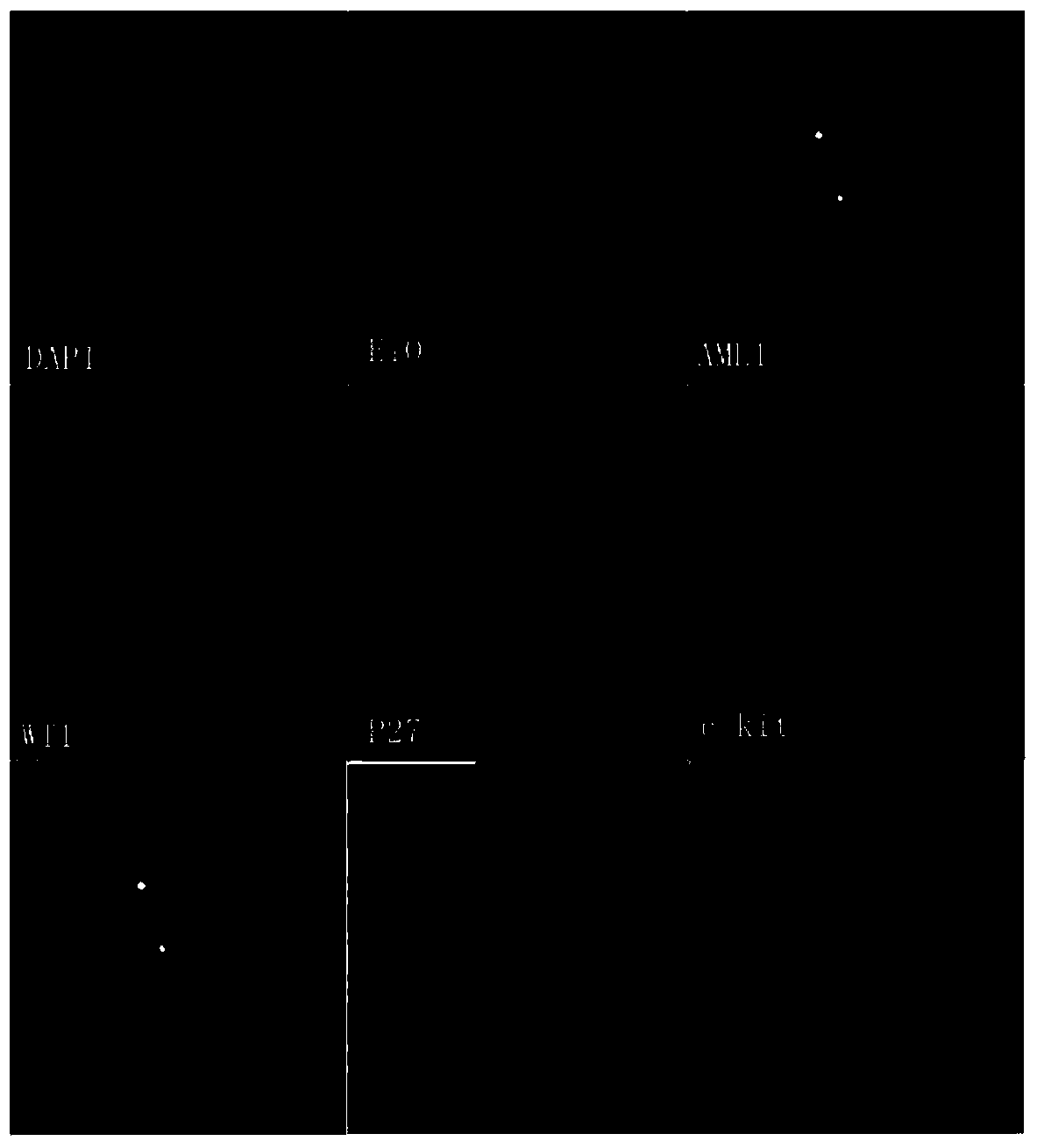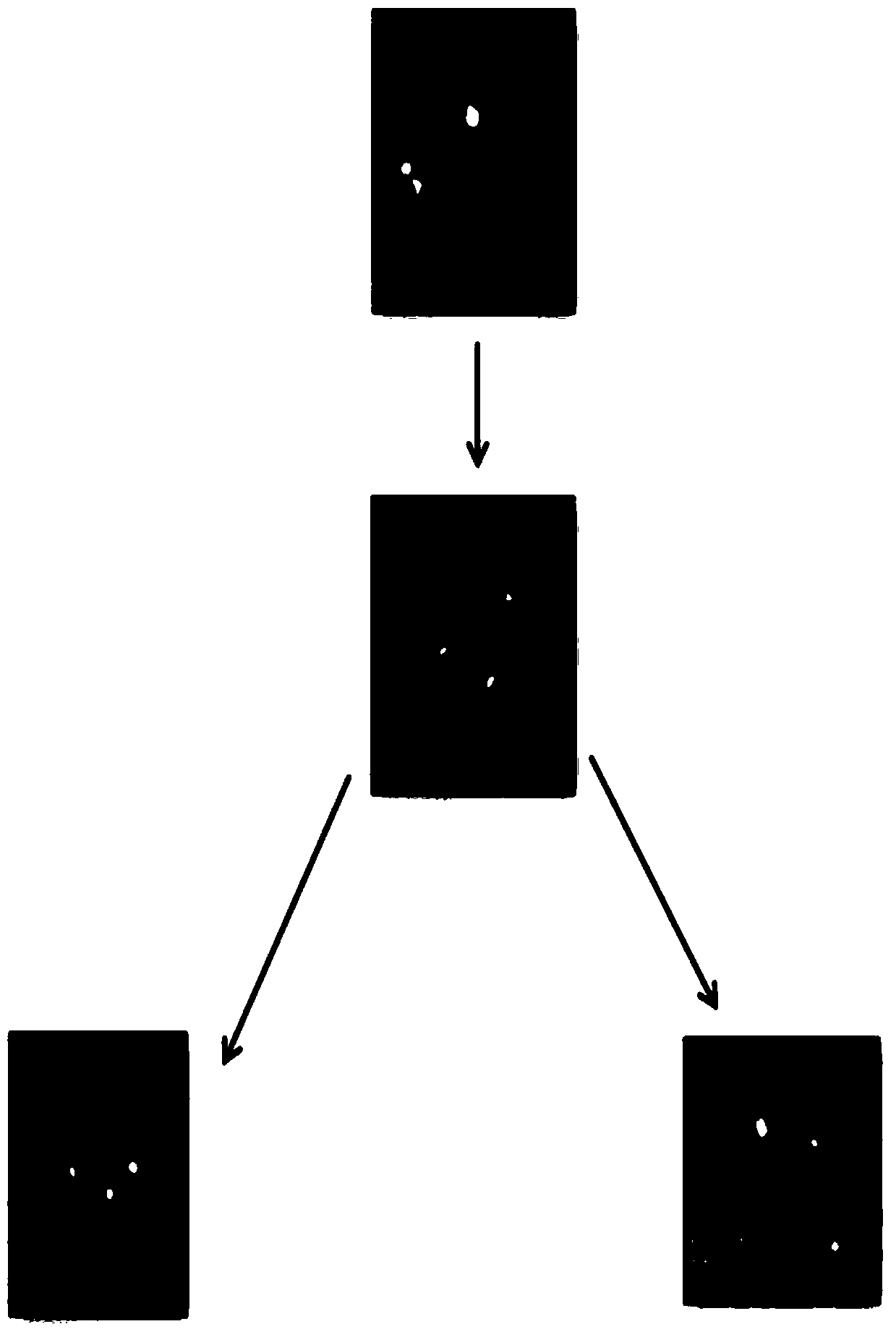Probe kit for detecting target gene copy-number alteration in t(8;21) AML
A gene probe and kit technology, applied in the field of t(8 detection, can solve the problems of low resolution, few counted cells, and inability to analyze the coexistence of multiple gene abnormalities, and achieve high signal strength and stability. strong effect
- Summary
- Abstract
- Description
- Claims
- Application Information
AI Technical Summary
Problems solved by technology
Method used
Image
Examples
Embodiment 1
[0039] Embodiment 1: Preparation of AML1 gene probe
[0040] 1. Acquisition of probe DNA
[0041] 1) Streak inoculation: Three BAC strains carrying the AML1 gene (RP11-77G18, RP11-697C13, RP11-177L11; purchased from Children's Hospital Oakland Research Institute) were operated according to the following steps. First, the BAC strains Streak inoculation on the agar plate containing antibiotic (chloramphenicol), incubate overnight (about 14 hours) at 37°C.
[0042] 2) Initial culture: Pick a monoclonal strain with good growth the next day, inoculate it in 2ml of LB liquid medium containing antibiotics (chloramphenicol), put it in a shaker at 37°C, set the shaker speed to about 200rpm, and culture 6-8 hours.
[0043] 3) Overnight culture: Transfer each 1ml of the bacterial solution obtained in step 2) to 200ml of LB liquid medium containing antibiotics (chloramphenicol), place it on a shaker at 37°C with a rotation speed of 200rpm, and cultivate overnight (about 14-16 hours).
...
Embodiment 2
[0088] Example 2: Preparation of Green-ETO (green), PF555–AML1 (yellow), PF590-WT1 (red), HyPer5-p27 (purple), PF415-c-kit (blue) probe combinations
[0089] 1. Acquisition of probe DNA
[0090] 1) Streak inoculation: will carry AML1 (RP11-77G18, RP11-697C13, RP11-177L11), ETO (RP11-118O8, RP11-122C21), WT1 (RP11-258G7, RP11-955L20), p27 (RP11 BAC strains with -380E18, RP11-70N14, RP11-377D9) and c-kit (RP11-103A16, RP11-178P22) genes were streaked on agar plates containing antibiotics (chloramphenicol), and cultured overnight at 37°C (about 14 hours).
[0091] 2) Initial culture: Pick a monoclonal strain with good growth the next day, inoculate it in 2ml of LB liquid medium containing antibiotics (chloramphenicol), put it in a shaker at 37°C, set the shaker speed to about 200rpm, and culture 6-8 hours.
[0092] 3) Overnight culture: Transfer each 1ml of the bacterial solution obtained in step 2) to 200ml of LB liquid medium containing antibiotics (chloramphenicol), place i...
Embodiment 3
[0137] A probe kit (20 copies / box) for detecting the copy number change of the target gene in t(8;21) AML, including the following components:
[0138] 1) The ready-to-use hybridization solution obtained in step 3) in Example 2, in which the concentration of AML1 gene probe, ETO gene probe, WT1 gene probe, P27 gene probe and C-kit gene probe is 4ng / μl, a total of 200 μl.
[0139] 2), DAPI counterstaining solution 2ml.
[0140] 3), 1 box of 12*12mm cover glass.
[0141] 4), 1 box of 18*18mm cover glass.
[0142] 5), 1 bottle of liquid rubber.
[0143] 6), 1 box of glass slides.
PUM
 Login to View More
Login to View More Abstract
Description
Claims
Application Information
 Login to View More
Login to View More - R&D
- Intellectual Property
- Life Sciences
- Materials
- Tech Scout
- Unparalleled Data Quality
- Higher Quality Content
- 60% Fewer Hallucinations
Browse by: Latest US Patents, China's latest patents, Technical Efficacy Thesaurus, Application Domain, Technology Topic, Popular Technical Reports.
© 2025 PatSnap. All rights reserved.Legal|Privacy policy|Modern Slavery Act Transparency Statement|Sitemap|About US| Contact US: help@patsnap.com



